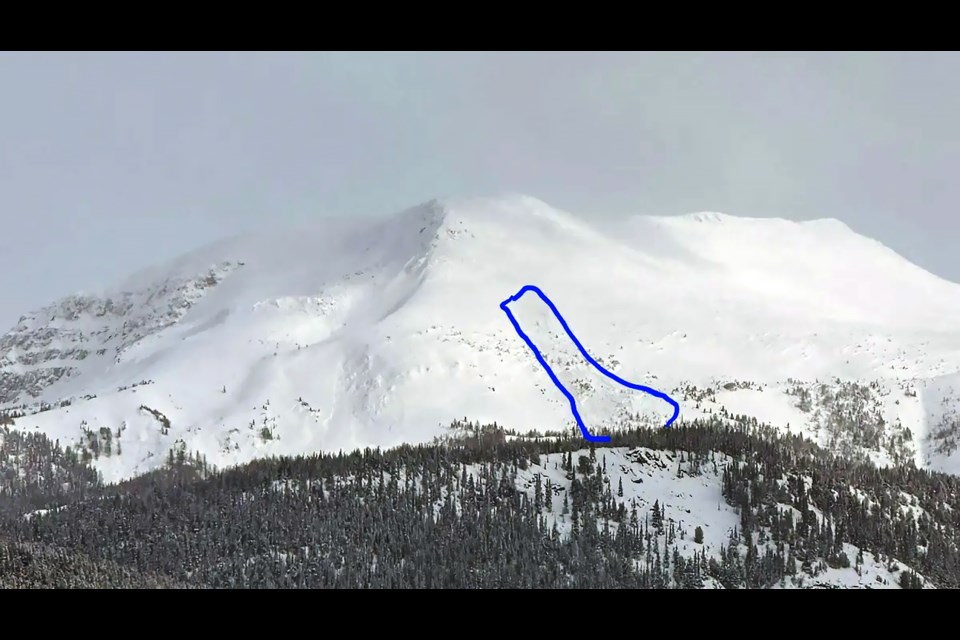A skier outside the Lake Louise ski boundary had a lucky escape after being swept away in an avalanche and fully buried on Sunday (March 3) during a time of high avalanche danger.
Two skiers were on Lipalian 4 outside the ski area boundary when the first person skied into the slope and triggered it, and then rode the avalanche for about 150 metres.
According to Parks Canada visitor safety specialists, the other skier, who was standing in a safe location, then switched on the transceiver to search and soon noticed a ski pole on the surface.
They say the skier’s face was 40 centimetres below the surface.
“After uncovering their airway, Person #2 was dug out from a 200 cm hole and sustained minor injuries including the loss of two teeth,” states Parks Canada.
“The party self-evacuated back to the Lake Louise Ski Area.”
A special avalanche warning, which went into place on Thursday (Feb. 29), remains in place today.
Backcountry enthusiasts are asked to avoid all avalanche terrain because of the extremely dangerous conditions, currently rated as high.
In recent days, there have been several natural, human and explosive triggered avalanches up to size 3.5, with some avalanches running the full path.
“The potential for large natural avalanches is very real, and human triggering remains likely,” states Parks Canada.
As well as the Lipalian incident, there was also a close call with a skier-triggered avalanche at Chute 5 at Tumbling off Highway 93 South.
The group reported on the Mountain Information Network (MIN) indicated the snow slid on icy ground with “immense force and barrelled down”.
The force knocked one of the skiers in the group of three off their feet “and was ragged dolled for 150 metres into six-foot-high trees” on the side of the main slide path.
The reporting person said the skier lost skis and poles. “No trauma injuries.”
“Very obvious outcome in hindsight. Many indications were overshadowed by great skiing earlier in the day. Poor judgment was responsible.”
On Monday, Parks Canada is doing avalanche control work on Vermillion Peak, Simpson Area, Mount Stephen and Cathedral Glades to protect roads.
Between 50 and 90 cm of new snow fell from Feb 23 to March 2 in Banff National Park.
Visitor safety specialists say this combined with strong winds has formed a 40-60 cm storm slab at alpine and treeline elevations.
“The weak Feb 3 facet/crust layer is down 50-90 cm and exists up to 2,500 m and higher on steep solar aspects,” according to Parks Canada.
“The lower snowpack consists of several facet layers and depth hoar. The basal layer is weaker in shallow snowpack areas.”
The Outlook will update this story as more information becomes available.



